In 1930, the valve was still using
manufacturing techniques from the electric lamp, where the glass
was the basic element for the construction of the bulbs to encapsulate
its inners elements. However, after the WWI the continuous evolution
of wireless, the transmitters were requiring higher-powered
transmission valves
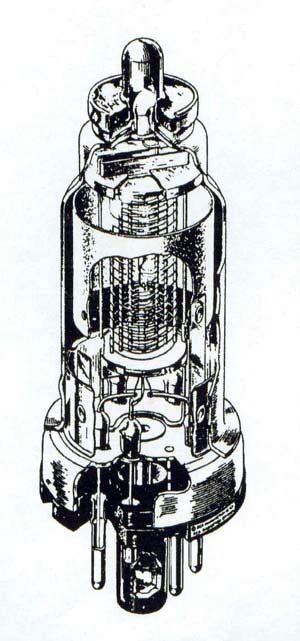 |
| (b) Cross section of the metal valve
made in the USA. |
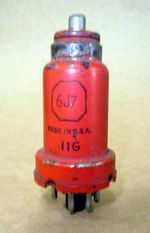 |
| Metallic valve pentode type 6J7. Also known following denomination:VT-91, VR-56, CV-1074 |
with their higher operating temperatures and associated cooling
problens. In order to facilitate the cooling, the first high-powered
valves were manufactured in such away the anode in the form
of a copper cylinder, fused in the bottom of the bulb, having
its outer surface totally exposed.
These types of valves were called "CAT", cooled anode
transmitting. In the reality, they were embryo of the first
metal valves, launched in Europe in 1933 by the companies Marconi
and Osram. In those types of valves, having external anode the
conventional glass mounting stem were replaced by a new assembling
technique where the lead-out wires were arranged in a circle
and sealed through the end section of the glass portion of the
bulb. These new thermionic devices were called as CATKIN valves.
(a)
In the USA, the first metal valves appeared in 1934 in a joint
venture between the companies RCA and GE.
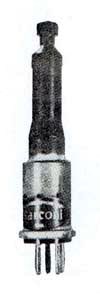 |
| (a) The CATKIN valve |
They used a different manufacturing process in such away
the valve inner elements were assembled in a total metal bulb
that improves the valve mechanical rigidity as well as actuating
as an electrical shield. (b) During the manufcaturing process
the enginners used specific types of material in order all
the components could have the same thermal expansion coefficent.
The metal valve had also a new kind of base, provided with
a guide pin in order to improve its fitting in the chassis
socket. (c)
The appearance of the metal valve revolutionized the manufacturing
methods by introducing tight quality standards which soon
reflected in the developments of new types of communication
equipments for military applications whose performance was
duly tested and approved in the scenario of the WWII. (d)
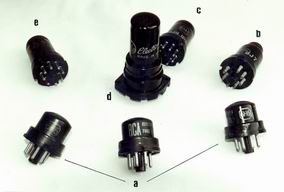 |
(c) Several types of American
metal valves:
a) Type 6H6, double diode - b) type 6SJ7, sharp
cutoff pentode - c) type 6SA7, pentagrid converter
- d) type 6J5, medium mu triode - e) type 6SK7,
remote cutoff pentode. |
|
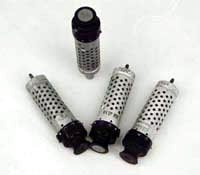 |
| (d) Metal valve RV2P800, used
in communication radios of the German army. |
|
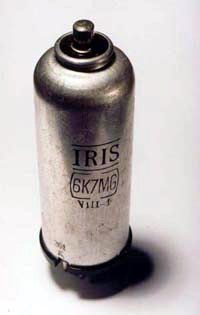 |
| (e) Metal Valve type MG |
|
|